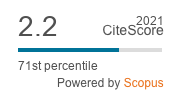Land Use and Agroforestry in Thailand with Special Reference to the Southern Region
Abstract
Thailand is a tropical monsoon country in South East Asia. About 39 and 29.5% of the total land area (51.3 million ha) are farm holding land and forest land; and 64% of the surpassing 52 millions population is agriculture population. Per capita income of the agriculture population is c. 1:8.5 of the non-agriculture population. The major cultivated crops are paddy, field crops, fruit trees, tree crops and vegetables, etc. Land productivity is low and population growth is high which make a considerable pressure on the available cultivated land. As a result, forest land was markedly encroached for expansion of cultivated land, which caused a severely damage to the ecology and natural resources. At present, Thailand’s soil is subjected to degradation and erosion. Reforestation and agroforestry have been operated to sustain the rate of deforestation, but still lags behind. Four main types of agroforestry are practiced throughout Thailand. Agrisilvicultural system, Silvopastoral system, Apisilvicultural system and Pisci-silvicultural system. For Southern Thailand, horticulture crop likes fruit trees and rubber are integrated in the system instead of field crops. Up-to-date, Apisilvicultural system seems to be the most productive system for this region, whilst Pisci-silviculture received less attention.
Downloads
Published
How to Cite
Issue
Section
License
This is an open access article under the CC BY-NC-ND license http://creativecommons.org/licenses/by-nc-nd/4.0/









